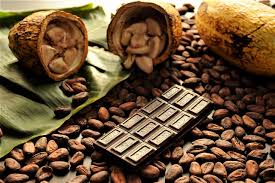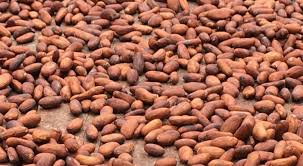Cacao, “kakaw” in Mayan and “cacahuatl” in Nahuatl, is the cocoa plant from which we get the raw materials in making chocolates and other cocoa products. It is native to the deep tropical regions of America. The cacao tree originated in the Amazon and was distributed by travelers and traders throughout Central America and Mesoamerica according to studies made into the origin of the Theobroma cacao. Cacao and its cocoa beans were highly prized during this time because the beans were used as money and were processed to create drinks for medicinal and ritual purposes. The stimulating effect of cocoa was an important factor to promote health and to cure sickness.
The Mayans were the first known cultivators of cacao plantations in the lowlands of south Yucatan as far back as 600 AD. Cacao trees were already being grown by the Aztecs of Mexico and the Incas of Peru even before the Europeans discovered Central America. According to Mayan belief, cacao was discovered by the gods in a mountain and Maya mythology tells of the Plumed Serpent which gave the cacao to the Mayans when humans were created by Xmucane, their divine grandmother goddess.
The Spanish explorer Hernando Fernandez was the first to discover the importance of cacao for trading in the New World. He found out how the Aztec Indians made drinks out of cocoa beans during his conquest of Mexico. After a hundred years of keeping cacao secret from the rest of the world, the Spaniards finally let it out to the rest of Europe through the Spanish monks. Chocolate drinking became very famous throughout Europe but was reserved to aristocrats and the wealthy. Subsequently, it found its way to America.
There are three different classifications of cacao:
Criollo – considered to be the prince of cacao, has soft thin-skinned pods with light color and a unique and pleasant aroma Forastero – has thick-walled pods and pungent smell Trinitario – a cross between Criollo and Forastero has good, aromatic flavor and which is commonly cultivated in many parts of the globe.
Before the cacao beans become chocolates for eating and cooking, the cacao tree’s fruit pods are harvested and the cocoa beans or seeds are removed from these pods. Fermentation follows next, and this usually lasts from three to nine days. This process kills the germ of the beans and activates enzymes to prepare the beans for drying and roasting. However, before roasting, beans go through a cleaning machine that removes dried cacao pulp and other materials that have to be removed.
After the roasting process, the beans are cooled and the shells are removed. Once the cacao meat or nibs are separated form the shells, these are then grinded until chocolate liquor is produced. The chocolate liquor will then be allowed to solidify and result to unsweetened or bitter chocolate. After which, the next steps would be to make the different kinds of chocolates and chocolate products.
As you can see, cacao is the foundation for many gourmet chocolate and cocoa products, including your favorite candy bars, drinks, and even desserts. From the first Mesoamerican people to use it to today’s highly-praised chocolatiers, cacao is a treasured ingredient.

